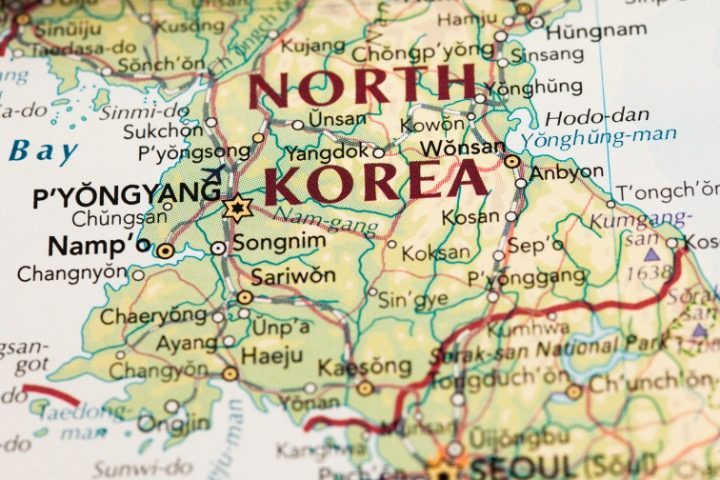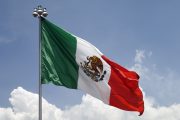
Pyongyang has reportedly made another stride in its nuclear weapons program.
According to the official outlets of the Kim regime on Friday, North Korea tested an underwater nuclear weapons system known as Haeil-5-23 — a response to naval exercises performed by the United States, Japan, and South Korea.
As Newsmax noted, the state-run media Korean Central News Agency called joint military drills by the three countries “a cause of further destabilization of the regional situation” and a “serious threat” to North Korea’s national security.
In a statement, a spokesman for the North Korean defense minister said: “Our army’s underwater nuke-based countering posture is being further rounded off and its various maritime and underwater responsive actions will continue to deter the hostile military maneuvers of the navies of the U.S. and its allies.”
South Korea, meanwhile, spoke out against the North’s weapons tests, declaring that “Our military is thoroughly prepared for North Korea’s provocations under a solid joint defense posture with the United States.” Seoul said there will be “overwhelming” responses if North Korea attempts a direct provocation against the South.
Per North Korean state media, Haeil-5-23 is intended to make sneak attacks in enemy waters, triggering an underwater explosion that then causes a large radioactive wave capable of destroying major operational ports and naval strike groups.
North Korea conducted its first nuclear test in 2006, followed by subsequent tests in 2009, 2013, 2016, and 2017. These actions were met with widespread condemnation from the international community. Kim Jong Un, Supreme Leader of North Korea, has continuously pushed to expand his country’s nuclear capabilities in spite of international pressure. Pyongyang claims to have developed intercontinental ballistic missiles (ICBMs) capable of reaching the continental United States, raising alarms globally.
Kim in recent weeks has assumed more aggressive rhetoric. During a Monday speech before the Supreme People’s Assembly, Kim vowed to destroy his father’s Unification Arch (a monument to the possible reunification of the Korean Peninsula) and declared South Korea his country’s “principal enemy,” rejecting the doctrine of his father and grandfather that “national reunification should be achieved by peaceful means without resorting to arms.”
North Korea “does not want war, but we also have no intention of avoiding it,” Kim said in his address to lawmakers, vowing that, if war breaks out, he will take the entire peninsula by force.
During the meeting in which Kim delivered his speech, the assembly declared the dissolution of the Committee for the Peaceful Reunification of the Country, the National Economic Cooperation Bureau, and the Kumgangsan International Tourism Administration. These entities were established for cooperation with the Republic of Korea (ROK), the official name for South Korea.
As reported by The Washington Post, some North Korea experts take the regime’s recent actions as indications that Pyongyang is gearing up for war:
After the country’s top military organization held an unusual number of meetings in the middle of last year, Kim called for “preparations for a revolutionary war for accomplishing” reunification, the authors note.
Kim rounded out the year saying that a “physical clash can be caused and escalated even by a slight accidental factor” near the inter-Korean border. His powerful sister, Kim Yo Jong, hammered home the point by warning that the North “will launch an immediate military strike if the enemy makes even a slight provocation.”
This is more than the usual bluster, the pair of experts say.
… Along with the escalating rhetoric, Pyongyang is bolstering its military forces. Kim vowed to further expand his weapons arsenal in 2024 by launching new spy satellites, building military drones and producing more nuclear materials.
Kim’s calculations are reportedly changing as he grows more confident in his country’s nuclear capabilities and the deterrent these provide against aggression by South Korea, the United States, and other powers.
The war in Ukraine may also be a factor in Kim’s evolving stance. Russia’s ability to wage a relatively limited war without incurring direct involvement by NATO or the United States could be a sign that North Korea could take similar measures in the future, engaging in limited aggression — and the West, as with Russia, would stand back out of fear of getting hit by North Korean nuclear warheads.
Nevertheless, some analysts believe that North Korea is simply doing what it has done before: Using military buildup, weapons tests, and fiery language to gain concessions from its rivals.
“If the Kim regime was serious about war readiness, it would be stocking up on its weapons and munitions rather than sending a large amount of them overseas,” said Lee Ho-ryung, a North Korean military expert at Seoul’s Korea Institute for Defense Analyses. Lee was referring to the fact that in the Ukraine war, Russia has been deploying missiles purchased from Pyongyang.
Ultimately, dealing with North Korea is a delicate act. While it’s possible Kim Jong Un could be bluffing with his threats, the fallout of calling that bluff — if the West calculates wrongly — would be globally catastrophic.



